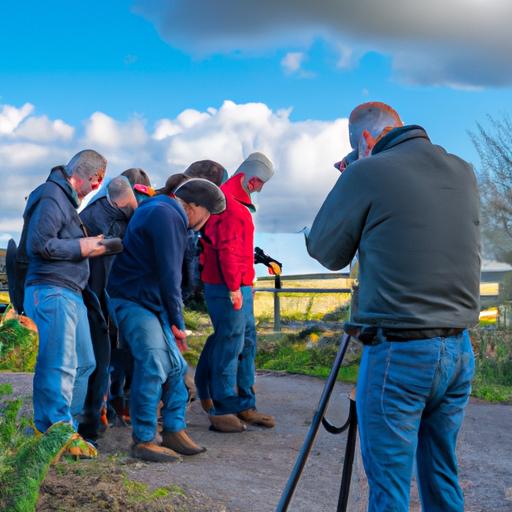Imagine being able to capture breathtaking moments, freeze time, and express your unique perspective through the lens of a camera. Photography is not just a hobby; it’s an art form that allows us to preserve memories and ignite our creative side. Whether you aspire to become a professional photographer or simply want to enhance your visual storytelling skills, this article is your gateway to the captivating world of photography for beginners.
A. Importance of photography and its growing popularity
In today’s digital age, visual content has become a powerful medium for communication. Photography plays a pivotal role in conveying emotions, telling stories, and sharing experiences. From Instagram feeds to advertising campaigns, captivating images have the ability to captivate and engage audiences like never before.
But why has photography gained immense popularity in recent years? One reason is its accessibility. With the advancements in technology, cameras have become more affordable and user-friendly, empowering aspiring photographers to embark on their creative journey.
Moreover, photography allows us to immortalize moments, preserving them for generations to come. Whether it’s capturing the joyous milestones of life, documenting breathtaking landscapes, or exploring the intricate details of everyday objects, photography enables us to freeze time and create lasting memories.
B. Benefits of learning photography as a beginner
Learning photography as a beginner goes beyond the acquisition of technical skills. It opens up a world of possibilities for personal growth and self-expression. Here are some key benefits of diving into the realm of photography:
-
Creative Outlet: With a camera in hand, you have the power to unleash your creativity and showcase your unique perspective. Photography allows you to experiment with composition, lighting, and subject matter, enabling you to create visually stunning images that evoke emotions and tell stories.
-
Observational Skills: Engaging with photography trains your eye to observe the world around you more closely. You become attuned to details, patterns, and moments that often go unnoticed, fostering a deeper appreciation for the beauty that surrounds us.
-
Self-Expression: Photography offers a platform for self-expression and personal exploration. Through your images, you can communicate your thoughts, feelings, and experiences, allowing others to see the world through your lens.
-
Stress Relief: Immersing yourself in the world of photography can serve as a therapeutic escape from the pressures of everyday life. It provides an opportunity to disconnect from the digital world, be present in the moment, and find solace in the act of capturing images.
So, whether you’re looking to pursue photography as a career or simply want to ignite your creative spark, photography for beginners offers a multitude of benefits that extend far beyond the realm of pixels and lenses. It’s time to embark on a journey of self-discovery and visual storytelling. Are you ready to capture the world through your lens?
Essential Photography Equipment for Beginners
As you embark on your photography journey, having the right equipment is essential to capture stunning images. Let’s explore the key components that every beginner photographer should consider.
A. Camera options for beginners
Choosing the right camera can seem overwhelming with the multitude of options available. As a beginner, it’s important to find a camera that strikes a balance between functionality and ease of use. Here are a few popular choices:
-
Digital Single-Lens Reflex (DSLR) Cameras: DSLRs offer versatility and excellent image quality. They provide manual control over settings, interchangeable lenses, and a wide range of accessories. Canon EOS Rebel T7i and Nikon D3500 are popular entry-level DSLR options.
-
Mirrorless Cameras: Mirrorless cameras are compact and lightweight, making them ideal for travel and street photography. They offer advanced features, including electronic viewfinders and high-speed autofocus. Sony Alpha a6000 and Fujifilm X-T30 are recommended mirrorless cameras for beginners.
-
Point-and-Shoot Cameras: Point-and-shoot cameras are compact, easy to use, and budget-friendly. They are perfect for casual photography and beginners who prefer simplicity. Canon PowerShot G7 X Mark II and Sony Cyber-shot RX100 are popular options in this category.
B. Understanding different camera features and specifications
To make the most of your camera, it’s important to understand its features and specifications. Here are some key aspects to consider:
-
Megapixels: Megapixels determine the resolution of your images. While higher megapixels allow for more detailed prints, a higher number doesn’t necessarily guarantee better image quality.
-
Sensor Size: The size of the camera sensor affects image quality, low-light performance, and depth of field. Larger sensors generally produce better image quality.
-
ISO Range: ISO determines the camera’s sensitivity to light. A wider ISO range allows for better low-light performance, but higher ISO settings may introduce noise in the images.
C. Must-have accessories for beginner photographers
In addition to a camera, there are a few essential accessories that can enhance your photography experience:
-
Lenses: Invest in a versatile lens, such as a standard zoom lens (18-55mm), to cover a wide range of focal lengths. Consider prime lenses for better low-light performance and sharper images.
-
Tripod: A tripod provides stability and allows for long exposures, sharp images in low light, and creative compositions. Look for lightweight and sturdy options.
-
Memory Cards and Batteries: Ensure you have sufficient memory cards to store your photos and extra batteries to avoid running out of power during shoots.
-
Camera Bag: A good camera bag protects your gear and keeps it organized. Look for a bag with padded compartments and adjustable dividers.
By understanding camera options, features, and accessories, you can make informed decisions that suit your photography goals and budget. Remember, the right equipment is a tool that empowers your creative vision. So, gear up and get ready to capture breathtaking images!
Understanding the Basics of Photography
Photography is an art that combines technical knowledge with creative vision. To capture stunning images, it’s crucial to understand the fundamentals. In this section, we will delve into the core principles that form the foundation of photography for beginners.
A. Mastering the exposure triangle: aperture, shutter speed, and ISO
The exposure triangle is the holy trinity of photography. It consists of three essential elements: aperture, shutter speed, and ISO. These elements work in harmony to control the amount of light that enters the camera and impacts the overall exposure of the image.
Aperture refers to the opening in the lens through which light enters. It determines the depth of field, or the range of sharpness in an image. A wide aperture (small f-number) creates a shallow depth of field, ideal for portraits and subject isolation, whereas a narrow aperture (large f-number) produces a greater depth of field, suitable for landscape photography.
Shutter speed refers to the duration for which the camera’s shutter remains open. It determines the amount of light that reaches the camera sensor and controls motion blur. A fast shutter speed freezes motion, perfect for capturing action shots, while a slow shutter speed allows for long exposures, resulting in creative effects like light trails or silky waterfalls.
ISO measures the camera sensor’s sensitivity to light. A low ISO setting (e.g., ISO 100) is ideal for well-lit situations, offering minimal noise and maximum image quality. On the other hand, a higher ISO (e.g., ISO 1600) is suitable for low-light conditions but may introduce noise and reduce image quality.
B. Comprehending composition techniques for better photos
Composition is the art of arranging elements within a frame to create visually pleasing and impactful images. By understanding composition techniques, you can enhance the storytelling aspect of your photographs and create compelling visuals.
Rule of Thirds: Divide your frame into a grid of nine equal parts by imagining two horizontal and two vertical lines. Place your main subjects or points of interest along these lines or at their intersections to create a more balanced and visually appealing composition.
Leading Lines: Utilize lines within your frame, such as roads, fences, or architectural elements, to guide the viewer’s eye towards the main subject or create a sense of depth and perspective in your image.
Symmetry and Patterns: Capture symmetrical scenes or repetitive patterns to create visually striking images. Symmetry brings a sense of harmony, while patterns add rhythm and visual interest to your compositions.
C. Exploring different types of photography genres
Photography encompasses a wide range of genres, each with its unique characteristics and techniques. Exploring various genres allows you to find your niche and develop your skills in a specific area of interest. Here are a few popular photography genres to consider:
Portrait Photography: Capture the essence and personality of individuals, focusing on their facial expressions, emotions, and unique features.
Landscape Photography: Immortalize the beauty of nature, from majestic mountains to serene seascapes, by capturing expansive and breathtaking vistas.
Street Photography: Document the everyday moments and stories of people in public spaces, capturing candid, unposed, and authentic moments.
Macro Photography: Dive into the miniature world, capturing intricate details of small subjects like flowers, insects, or textures.
As you embark on your photography journey, understanding the exposure triangle, mastering composition techniques, and exploring different genres will lay a solid foundation for your growth as a beginner photographer. So, grab your camera, experiment with these concepts, and let your creativity flow as you capture stunning images that tell your unique story.
Learning Photography Techniques for Beginners
As a beginner in the world of photography, mastering essential techniques is crucial to elevate your photography skills. This section will delve into fundamental techniques that will help you capture stunning images and unleash your creative potential.
A. Capturing sharp and well-exposed images
Achieving sharpness and proper exposure in your photographs is essential to convey your vision effectively. Here are a few tips to capture sharp and well-exposed images:
-
Use the right aperture: Adjusting the aperture (measured in f-stops) allows you to control the depth of field. A smaller aperture (higher f-number) increases the depth of field, ensuring more of your subject is in focus. Conversely, a larger aperture (lower f-number) creates a shallow depth of field, perfect for emphasizing the subject while blurring the background.
-
Set the appropriate shutter speed: Shutter speed determines the duration the camera’s shutter remains open. A faster shutter speed freezes motion, while a slower one creates motion blur. Experiment with different shutter speeds to capture the desired effect in your photos.
-
Master the ISO setting: ISO controls the camera’s sensitivity to light. Lower ISO values (e.g., 100) are ideal for well-lit environments, as they produce less noise. On the other hand, higher ISO values (e.g., 800 or above) are useful in low-light situations, but may introduce more noise. Find a balance to maintain image quality while adapting to different lighting conditions.
B. Understanding and utilizing natural light effectively
Lighting plays a pivotal role in photography, and understanding how to utilize natural light is a valuable skill. Here are some tips to make the most of natural light:
-
Golden Hour: The hour after sunrise and before sunset, known as the golden hour, provides soft, warm light that enhances the mood and adds a magical touch to your photos. Take advantage of this time to capture stunning landscapes, portraits, and outdoor scenes.
-
Diffused Light: Overcast days or shooting in shaded areas create a diffused light that is perfect for minimizing harsh shadows and capturing details. Embrace these lighting conditions for flattering portraits or macro photography.
-
Backlighting: Experiment with backlighting by positioning your subject in front of a light source, such as the sun. This technique creates a beautiful halo effect and adds depth and drama to your images.
C. Tips for achieving proper focus and depth of field
Achieving accurate focus and controlling the depth of field is crucial to highlight your subject and create captivating images. Consider the following tips:
-
Autofocus Modes: Understand the autofocus modes on your camera, such as single-point autofocus or continuous autofocus. Experiment with different modes to ensure sharp focus on your subject.
-
Manual Focus: In certain situations, manual focus gives you more control. Practice using manual focus to ensure precise and intentional focusing.
-
Depth of Field Preview: Utilize the depth of field preview function, if available on your camera, to visualize how the chosen aperture affects the depth of field before capturing the image.
By mastering these techniques, you’ll enhance your photography skills and bring your creative vision to life. Remember, practice makes perfect, so grab your camera and embark on a journey of exploration and experimentation. With each click, you’ll uncover new possibilities and develop your unique style as a photographer.
Post-Processing Tips for Beginner Photographers
As a beginner photographer, your journey doesn’t end once you’ve captured the perfect shot. Post-processing is an essential step in enhancing your images and bringing your creative vision to life. In this section, we’ll explore some valuable post-processing tips that will take your photography to the next level.
A. Introduction to photo editing software options
To unleash the full potential of your photographs, you need the right tools. There are various photo editing software options available, each offering unique features and capabilities. Here are a few popular choices for beginners:
-
Adobe Lightroom: Lightroom is a versatile and user-friendly software that allows you to organize, edit, and enhance your images with ease. Its intuitive interface and powerful editing tools make it a favorite among photographers of all levels.
-
Adobe Photoshop: Photoshop is the industry standard for advanced photo editing. While it has a steeper learning curve, it provides extensive control over every aspect of image manipulation. As a beginner, you can start with the basics and gradually explore its advanced features.
-
Capture One: Capture One is a professional-grade editing software known for its exceptional color grading and RAW processing capabilities. It offers a range of tools and presets that can enhance your images and give them a unique look.
B. Basic editing techniques to enhance your photos
Once you’ve chosen your preferred editing software, it’s time to learn some basic techniques to enhance your photos. Here are a few essential editing tools and adjustments you should familiarize yourself with:
-
Exposure and Contrast: Adjusting the exposure and contrast can breathe life into your images, making them appear more vibrant and balanced. Play around with these settings to achieve the desired look.
-
White Balance: White balance ensures that the colors in your photos appear natural and accurate. Experiment with different white balance settings to correct any color cast and achieve the desired mood.
-
Crop and Composition: Sometimes, a slight crop or adjustment to the composition can significantly improve the visual impact of your photo. Explore different cropping options and composition techniques to create a more compelling image.
C. Tips for organizing and storing your digital photo library
As you delve deeper into the world of photography, organizing and storing your growing digital photo library becomes crucial. Here are some tips to keep your images organized and easily accessible:
-
Create a File Structure: Develop a logical file structure that suits your workflow. Categorize your photos by date, location, or subject matter, making it easier to find specific images later on.
-
Use Keywords and Tags: Adding keywords and tags to your images can simplify the search process. Identify relevant keywords that describe the content of your photos and assign them accordingly.
-
Backup Your Photos: Invest in a reliable backup system to protect your precious images from accidental loss or hardware failure. Regularly back up your files to external hard drives, cloud storage, or both for added security.
By mastering the art of post-processing, you can transform good photos into extraordinary ones. Remember, editing should enhance your vision, not overpower it. Experiment, learn, and develop your unique editing style to create stunning images that reflect your creative vision.
Resources and Further Learning for Beginner Photographers
As a beginner photographer, there are countless resources available to help you refine your skills, expand your knowledge, and connect with fellow photography enthusiasts. Here are some valuable avenues to explore on your journey towards mastery:
A. Recommended books, websites, and online tutorials for beginners
Books have always been a reliable source of knowledge, and the world of photography is no exception. Consider adding these essential reads to your collection:
-
“Understanding Exposure” by Bryan Peterson: This book dives deep into the fundamentals of exposure, helping you grasp the concepts of aperture, shutter speed, and ISO, and how they work together to create impactful images.
-
“The Photographer’s Eye” by Michael Freeman: This influential book explores the principles of composition, guiding you to develop a discerning eye for capturing visually compelling photographs.
Websites and online tutorials also offer a plethora of information and guidance. Some reputable online platforms for beginner photographers include:
-
Digital Photography School: This comprehensive website covers a wide range of topics, from camera settings to post-processing techniques, providing step-by-step tutorials and articles to enhance your skills.
-
YouTube: The video-sharing platform hosts a treasure trove of photography tutorials and channels dedicated to teaching beginners. Channels like Peter McKinnon and Mango Street offer valuable insights and practical tips.
B. Joining photography communities and workshops for skill enhancement
Engaging with like-minded individuals can significantly accelerate your growth as a photographer. Joining photography communities, whether online or in-person, allows you to connect with fellow enthusiasts, share your work, and receive constructive feedback. Some popular online communities include:
-
500px: A photography-focused social platform that enables you to showcase your work, discover inspiring images, and connect with fellow photographers.
-
Reddit: The subreddit r/photography provides a space for photographers of all levels to engage in discussions, share their work, and seek advice.
Additionally, attending workshops and photography classes can provide hands-on learning experiences and valuable insights from seasoned professionals. Local photography clubs, community centers, and universities often offer workshops tailored to beginners.
C. Exploring opportunities for showcasing and sharing your work
As a beginner photographer, it is crucial to gain exposure and build a portfolio. This can be achieved by participating in photography competitions, submitting your work to online galleries, or even starting your own photography blog or website. Some platforms to consider include:
-
ViewBug: This online platform hosts photography contests in various genres, providing opportunities to showcase your work and gain recognition.
-
Flickr: A popular photo-sharing platform that allows you to create a portfolio, join groups, and engage with a vibrant photography community.
Remember, the journey of a photographer is a continuous learning process. Embrace the resources available to you, connect with fellow enthusiasts, and seize every opportunity to showcase your unique perspective. With dedication and practice, your photography skills will flourish, enabling you to share your vision with the world.
Now, armed with knowledge and inspiration, go forth and capture the beauty that surrounds you. The world is waiting to see your extraordinary photographs!



